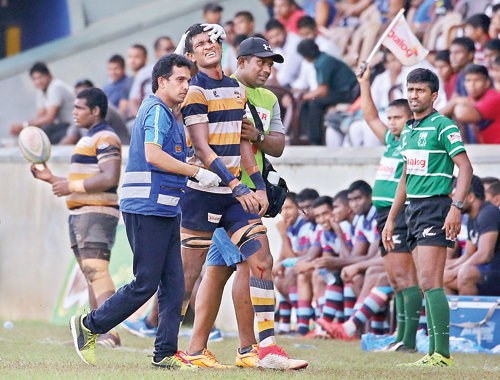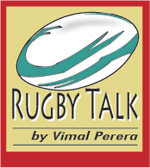Is it coaching or poaching — the hunt has begun
View(s):
Changes include lowering the height of tackles to “below the nipple line” to reduce the risk of head injuries
World Rugby announced that it will trial tackle law changes during the Men’s International Under-20s competitions. That happened in May and will happen again in August. Changes include lowering the height of tackles to “below the nipple line” to reduce the risk of head injuries.
Phase one were Global sanction increases introduced in January 2017 where yellow cards for high tackles were increased, and World Rugby studies show that the concussion rates have not increased. Phase two: The introduction of the high-tackle warning system at the World Rugby U-20 Championship in May, which aimed to penalise tacklers who were upright in a post-match review process, has reduced the concussion incidence by 50 per cent, according to preliminary data.
Phase three: Lowering of permitted tackle height in law at the World Rugby U-20 Trophy in Romania in August, with the RFU given approval extension for a similar trial for the RFU Championship Cup. The law trial is about tackles to be made below the armpit line.
For normal play this looks to be reasonable.
Today the players have learnt to run at the defensive line with their body height lowered and head down, to protect their head, or to milk a high-shot penalty. Then there is the pick-and-go manoeuver around the fringes, often close to the try line. So how can a legal tackle be made when the only part of the body presented to the tackler are the head and shoulders?
How will players, coaches and referees work on this? Can we say that if the ball carrier’s head is below his normal shoulder height when standing, a high tackle cannot be called? If a ball carrier leads with his head, making contact with the tackling player and a normal, safe tackle is prevented, is he creating a dangerous play for himself.
What about the tactic of leading with the head to prevent a tackle. Is it about changing the approach to tackling such as taking a man from the side? In Sri Lanka starting from 2017, we have seen law changes in the style of tackling. We have not, as the schools season saw a host of yellow cards: that is for technical development committee to consider.
It is in the midst of all this, that hunting for Schools and would-be coaches began immediately the Schools season was over. Most explained that the reason for looking for another coach is that the school did not perform well enough to win some type of silver. Will this help the boys who are playing the game? May be not; as the new coach must think in terms of the axe that may fall on his head as happened to the man before him.
The way it affects the boys is that they will be pushed to perform irrespective of how good it is for them as well as the game. The baseline of the angle is to win while the other will be to use players to the maximum. This means at times they will continue with a player despite the fact that he may have a niggling injury. That is the impending pressure that can be brought on the player, as the coach needs to show silver while the many advisers to Schools also want to see silver.
What prompted me to write on these lines were questions that were asked by a not-so-young server at a kiosk, dishing out tea and eats, close to the Royal Complex where the Under-18 Schools Rugby tournament was being played. He named a few Schools that intend to change coaches because they have not got close to the silver. I asked him what made him say so. It was the bits and pieces he picked up from old boys and parents who came for a sip and a puff. He said there are many who come as Royal Complex is the home for many junior games. This man with his silver hair covered amply with the dye that makes it black knows about rugby. It is not only Rugby he talks about but talks on cricket as well as football. The interest in sport is high the knowledge is acceptable.
I asked a few questions from people who did say some Schools are looking to replace the coaches. The problem however is that the cupboard seems empty when it comes to selection. I also stumbled across the thinking of many who want to have a go at coaching Schools Rugby. The pay they say is good or in some cases very good. This is also attracting some stars of a previous era looking to position themselves in coaching as they are due to retire or have retired from gainful employment. So why not coach as the pay is good seems to be the thinking. I would think it is a good idea but where is the entry point.
 In a recent statement about the trials on the law of tackling, World Rugby Chairman, Bill Beaumont said: “As a rugby father with sons playing at the elite and community level, I am committed to ensuring that rugby remains at the forefront of injury-prevention, specifically in the priority area of concussion.
In a recent statement about the trials on the law of tackling, World Rugby Chairman, Bill Beaumont said: “As a rugby father with sons playing at the elite and community level, I am committed to ensuring that rugby remains at the forefront of injury-prevention, specifically in the priority area of concussion.
The paternal positioning, as well as the experience of the retired are good for the game particularly at the lower age groups. The question is whether the old war horses want this or the icing on the cake. The thinking is we have played, coached and why cannot we do it now. They are reluctant to follow the education system of world rugby teaching on how to deliver: which is more carrot than stick. The thinking of a generation that is more than millennium but leading to a new digital generation needs a different approach and not one of our times; there were no trainers, we ran so many rounds and we practiced without water. That is somewhat old hat to a younger generation. It is like asking about Lotus 123 or Word Perfect when it is a different package the younger generation talks of.
It is about developing a supportive relationship with the adolescent athlete, and delivering an effective coaching environment to address their needs, and engending interpersonal and athletic development. That is why you got to get back to the drawing board and come to promote the product to a new market. That is what has to be looked at and not just to win.
Vimal Perera is a former Rugby Referee, Coach and an Accredited Referees’ Evaluator IRB


